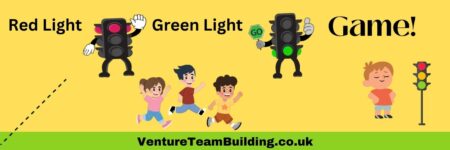This is a very simple exercise to help new trainers learn how to write lesson plans, structure a training session and to how to coach others. Each participant will have an opportunity to lead and teach a basic ‘how to’ activity, and receive feedback on what they did well and any improver’s.
Although the exercise can be done with large groups, it is recommended that you work with smaller groups of 6-12 learners as this allows more time for feedback, reflection and discussion.
Begin the exercise by speaking to learners about how to structure a training session. Discuss the key elements of a good training session, you can do this either as one big group or in smaller sub-groups.
Basic training session model:
I – Introduction
D – Demonstration
E – Explanation
A – Activity
S – Summary
Provide some example lesson plans and discuss the contents of these. Identify the key considerations for planning a training session such as the trainee’s age, ability, experience, expectations, and medical conditions as well as anything that could affect the training session such as venue, equipment and even the weather condition.
Introduce the purpose of the exercise, which is to gain experience teaching a subject to others and to receive feedback and improve as trainers. Explain that they will have to teach a subject for 10 minutes to the rest of the group. You can either get them to pick their own task, something they are familiar with or you can write a few tasks on paper and get them to pick these at random. Tasks should be simple, and should make use of the materials and resources available such as paper, pens etc
Here are a few examples:
- Buying a lotto ticket
- Opening an email account
- Making a paper aeroplane
- How to plan for a party
- Create a perfect cup of tea
Be creative and think of some unique tasks. Alternatively, you can also get them to write a task each and then mix them up at random.
Training sessions should last no longer than 10 minutes. If they run over the time, you will stop them and begin the review. It is the trainer’s responsibility to manage the session time and ensure that learners have enough time to learn about the subject and perform any related practical exercises.
Once everyone has a task, allow them time to plan for their training session. I generally give them up to an hour to plan and prepare, especially if they have never done anything like this before.
Once everyone is ready, it’s now time to begin the training sessions. Allow time for a break every 45-60 minutes. Rotate roles of the trainer, learners (or trainees) and observers. Two people will be observing, the rest of the group will be trainees.
After each task, the observers and trainees will give feedback, as to how well the training session was delivered. Depending on the quality of the group you are working with, you will notice that they repeat a lot of the comments and say, everything is great because they’re worried about the response they’ll get when they teach their session.
If anything is missed by the group, add it but remember to remain positive at all times. Before I add my own feedback I ask the trainer if there is anything they would do differently next time. It’s better to learn through experience and self-discovery then someone telling you. They are more likely to process the information better. You’ll often find that most people are their own worst critic anyway and will often be overly harsh on themselves. If they still haven’t come up with what I’m looking for, I will try and use questions to lead them to the answer or improvement rather than telling them.
Here are a few key points that should be covered during the review:
- Basics – Did they introduce themselves? Did they map the session and discuss the why? Discuss they discuss previous experiences? Did they finish on time? Was everyone actively engaged? Did they use questions?
- Communication – Were they clear and concise with instructions? How was the speed and tone of their speech? Did they use natural pauses or did they use filler words?
- Language – Did they use simple language? No jargon. Could a six year old understand what they were talking about? Was the use of words appropriate to the group and audience? Did they explain any words that the trainees didn’t understand?
- Coaching – Did they help the trainees? Did they use progressive goal setting or development? Were they providing constructive criticism? Did they encourage? How interactive was the session?
- Structure – Did the session structure make sense? Did they allow time to review and discuss learning lessons? Was there enough time allocated to the actual doing (time practicing)?
Once everyone has taught their task, send them off and allow time for a period of self-reflection. When they return get them to work in smaller reflection groups and discuss the workshop and identify key learning lessons.
Gather everyone together and discuss the workshop in full. Allow opportunities for participants to discuss their feelings and share what they learned.
Check out my training delivery workshops available from just £545 for the day. Great for summer camps, outdoor centres, teacher training days and those looking to teach team building and experiential learning activities.



